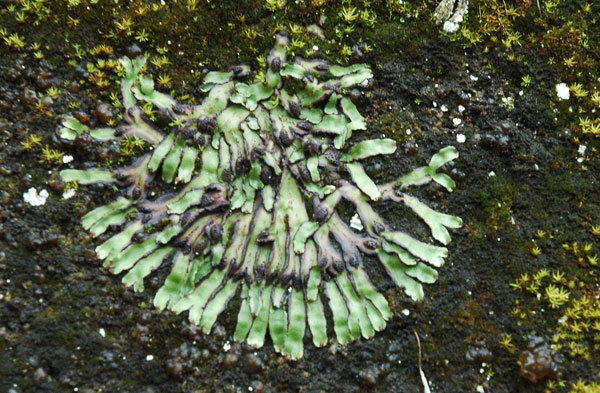Taxonomic Groups
| Angiosperms | Bryophytes | Caytoniales | Conifers | Cycadophytes | Ferns | Ginkgophytes | Leptostrobaleans |
|---|
| Lycophytes | Sphenophytes |
|---|
Bryophytes |
Arctic Fossil Bryophyte Images |
Mosses and Liverworts make up the group known as Bryophytes. They are often regarded as comparitively primitive plants because they reproduce not by seeds but by spores and the spores they produce are small and all of the same size. The can also reproduce vegetatively. These characteristics, coupled with an ability to survive long periods of desiccation, mean that they are very successful at occupying bare surfaces and are early colonisers. Their spores are abundant in the palynological record from the Arctic and they undoubtedly covered trees, soil surfaces, rocks and mud along river banks during late Cretaceous and Paleocene times. The megafossil forms tend to be those representing liverworts such as that shown on the right. |
 |
|
|---|---|---|
| Modern liverworts and mosses occuying a granitic rock surface. The liverwort has bifurcating flat leafy surfaces radiating outwards and is about 10 cm across. The tips of the upper layers of leafy shoots have darkened areas marked with small dots. These are the spore-producing reproductive structures. |
